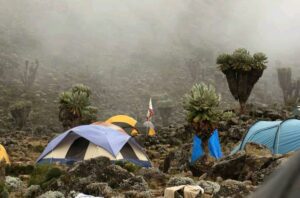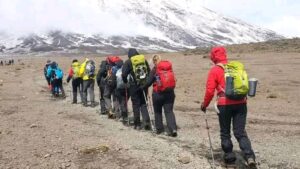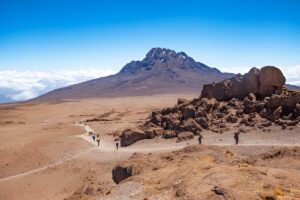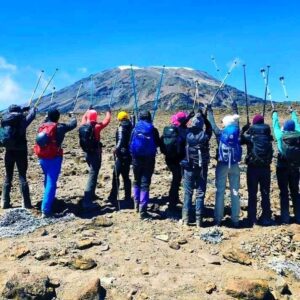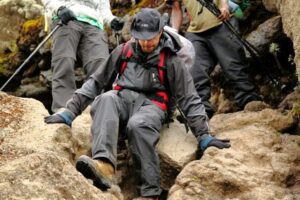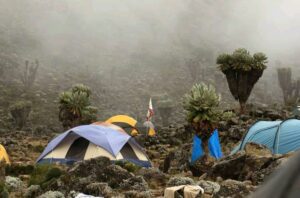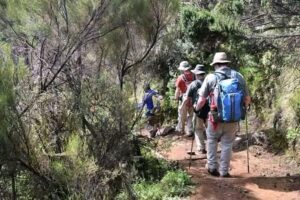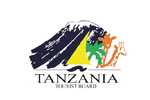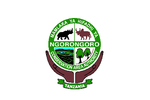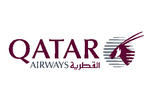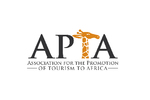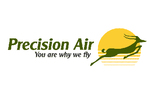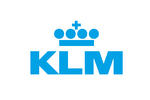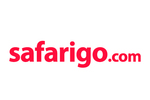8 Days /7 Nights climb Kilimanjaro
via Lemosho Route
- Arusha/Moshi>Mount Kilimanjaro> Moshi/Arusha
Tanzania Holidays Ideas
- Best time to go : All Year Arround
- 24/7 support
- No Hidden Costs
- Hand Picked Accomodation
Begin your unforgettable Mount Kilimanjaro tour via the Lemosho Route with a warm welcome at Kilimanjaro International Airport and a smooth transfer to Springlands Hotel. Our experienced guides deliver a comprehensive briefing to prepare you for your Kilimanjaro trek. Unwind with the hotel’s amenities, including a pool, scenic garden, bar, and restaurant, ensuring a relaxing start to your adventure.
Your Mount Kilimanjaro tour starts with a picturesque drive to Lemosho Park Gate for registration, followed by a hike through lush forest trails to Mti Mkubwa Camp. Over the next few days, journey through diverse landscapes, visiting Shira 1 and Shira 2 camps, the dramatic Lava Tower, and the renowned Barranco Wall. Each day of this Kilimanjaro tour offers new challenges and stunning views, building up to the exhilarating summit ascent to Uhuru Peak. After conquering the peak, descend to Mweka Camp and return to Springlands Hotel for a warm meal and time to reflect on your triumph. Enhance your Mount Kilimanjaro tour with optional extensions, such as safaris or a visit to Zanzibar, to discover more of Tanzania’s vibrant landscapes and culture.
What's Included
- Accommodations- Mentioned on Itinerary
- Meals & Beverages
- Scheduled Activities
- Transport Logistics -Mentioned on Itinerary
- Applicable Fees and Levies
What's Not Included
- Flights -International and local flights to and from.
- Gratuities and Tips
- Comprehensive Travel Insurance
- Personal Items
- Items not mentioned under Inclusions
Day 1
Transfer from Kilimanjaro Airport to Moshi Town
Upon landing at Kilimanjaro International Airport, our dedicated driver will warmly greet you, holding a sign with your name for easy recognition. From there, enjoy a smooth and comfortable transfer to the inviting Springlands Hotel.
At the hotel, savor a delightful meal before joining our seasoned mountain coordinators and guide for an engaging pre-trek briefing, where you’ll discover the exciting details of your upcoming Mount Kilimanjaro tour.
Relax in the serene ambiance of Springlands Hotel, complete with a refreshing swimming pool, a charming garden, a cozy bar, and a welcoming restaurant, setting the perfect tone for your adventure.
- Day Activities.
- Transfer From Jro Airport
- Stunning views of Mount Kilimanjaro from the airport
- Vibrant local markets and street life in Moshi town
- Lush greenery and coffee plantations en route
- Cultural glimpses of Chagga communities near Moshi
- Overnight & Meal Plan
- Sal Salinero Hotel
- Depend on your arrival
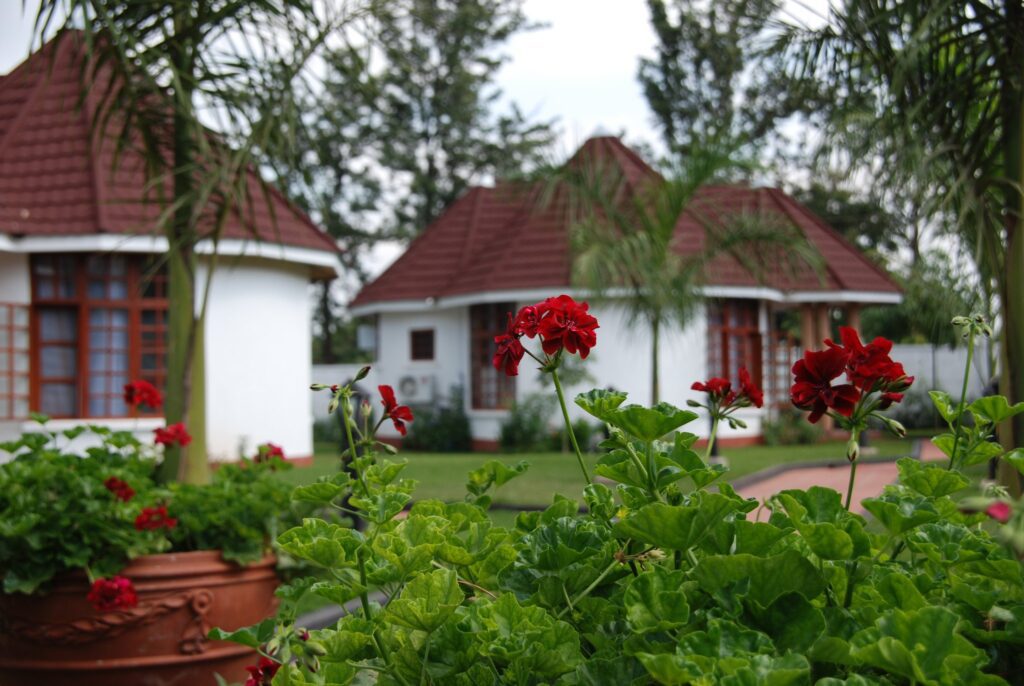
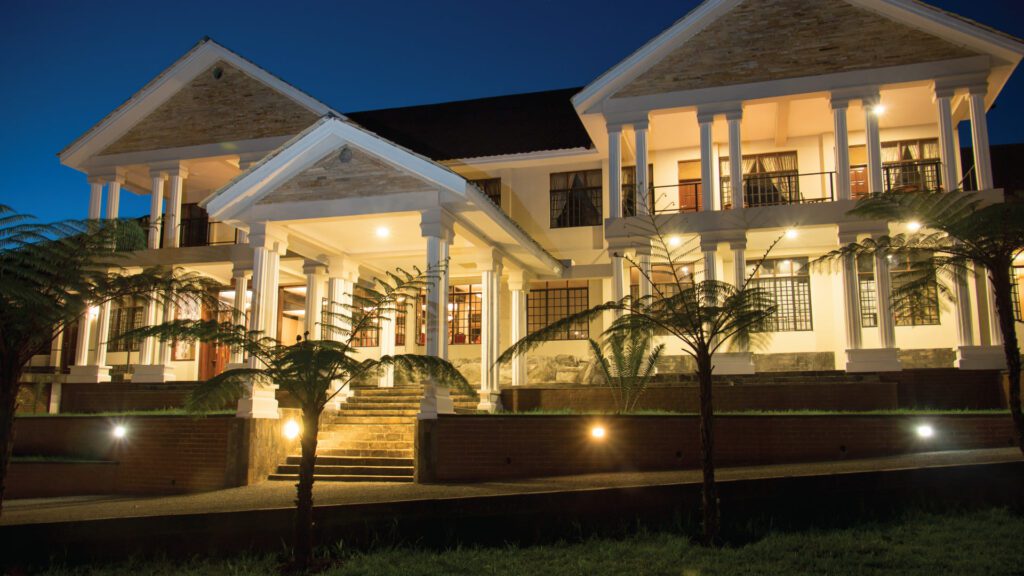
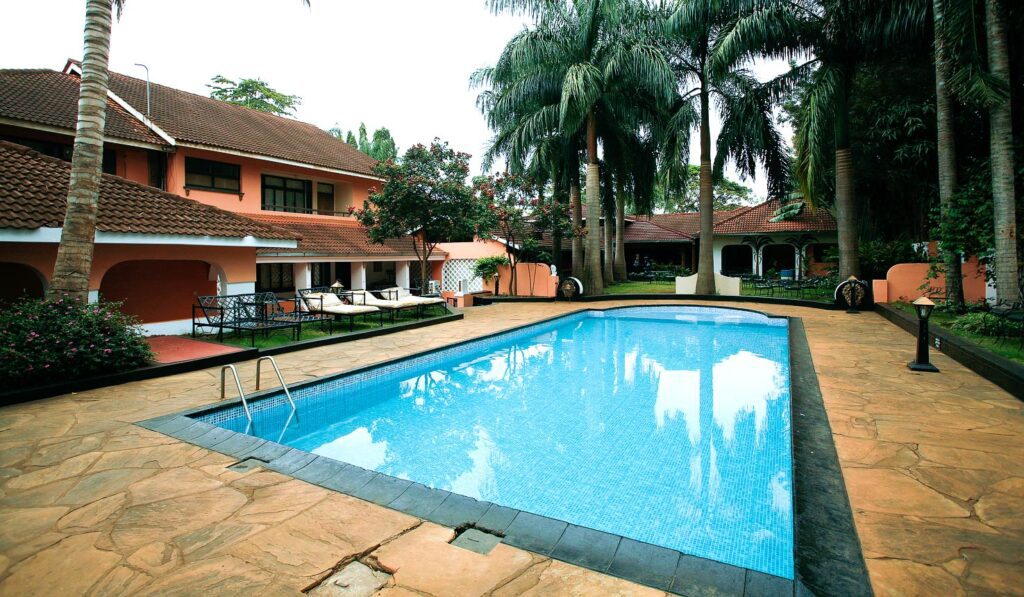
Day 2
Day 1: Lemosho Park Gate to Mti Mkubwa Campsite
After breakfast and a guide briefing at Springlands Hotel, you’ll travel 1.5 hours by vehicle to Lemosho Park Gate (2,100m). At Londorossi Gate, you’ll register before embarking on a 3-hour trek through scenic forest trails to Mti Mkubwa Campsite (2,750m). Upon arrival, porters will set up tents, and the chef will prepare lunch. After eating, you can relax until dinner. In the evening, your guide will brief you on the next day’s trek.
Altitude: 2,100 m – 2,750 m
Hiking distance: 7 km
Hiking time: 3 hours
- Day Activities.
- Attend a briefing from your guide
- Travel 1.5 hours by vehicle to Lemosho Park Gate
- Complete registration at Londorossi Gate
- Trek 3 hours through scenic forest trails to Mti Mkubwa Campsite
- Overnight & Meal Plan
- Camp Mti Mkubwa
- Dinner
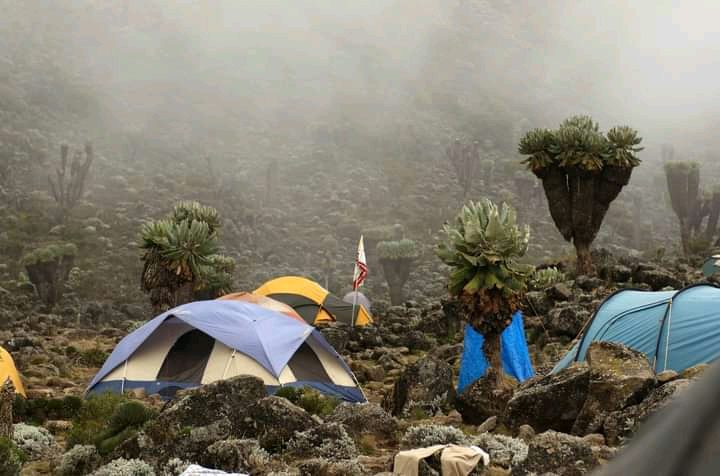
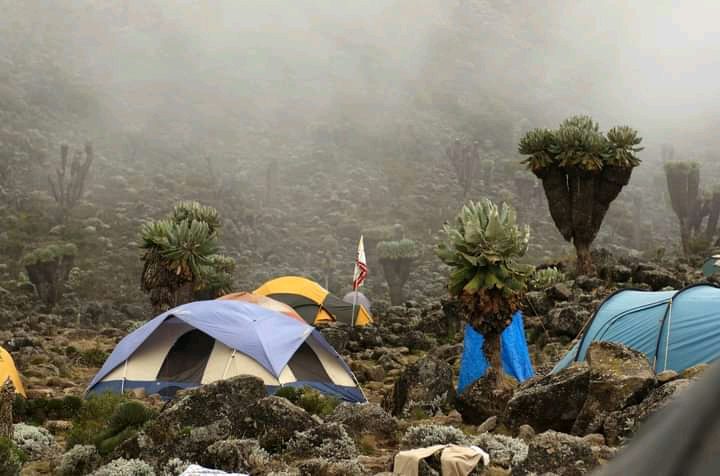
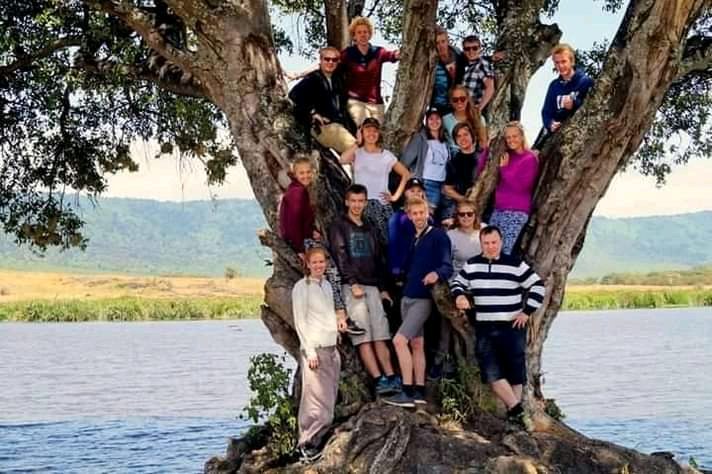
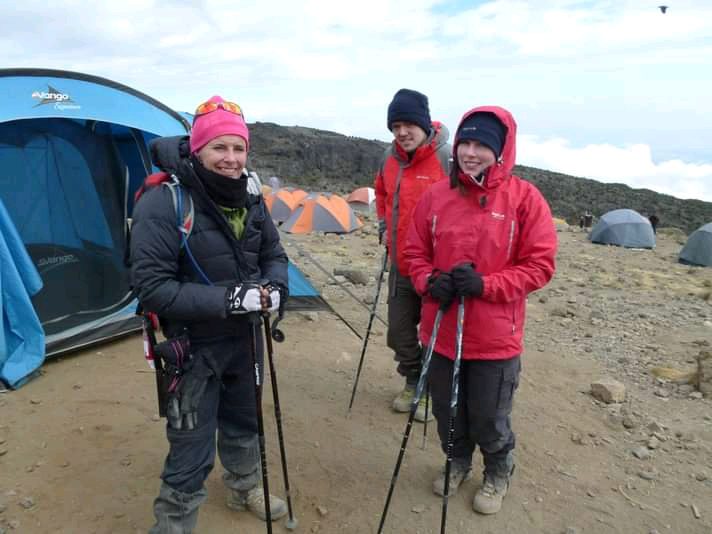
Day 3
Mti Mkubwa Campsite to Shira 1 Campsite
After breakfast at Mti Mkubwa Campsite, you’ll begin a 5-6 hour trek through the rainforest, transitioning into the heath and moorland zone, to Shira 1 Campsite (3,500m). The trail offers stunning views of the Shira Plateau. Upon arrival, porters will set up tents, and the chef will prepare lunch. After eating, you can relax and enjoy the scenic surroundings until dinner. In the evening, your guide will provide a briefing for the next day’s trek.
Altitude: 2,750 m – 3,500 m
Hiking distance: 8 km
Hiking time: 5-6 hours
- Day Activities.
- Enjoy a hearty breakfast at Mti Mkubwa Campsite.
- Take in breathtaking views of the Shira Plateau during the hike
- Arrive at Shira 1 Campsite and relax as porters set up tents
- Arrive at Shira 1 Campsite and relax as porters set up tents
- Overnight & Meal Plan
- Shira 1 Campsite
- Dinner

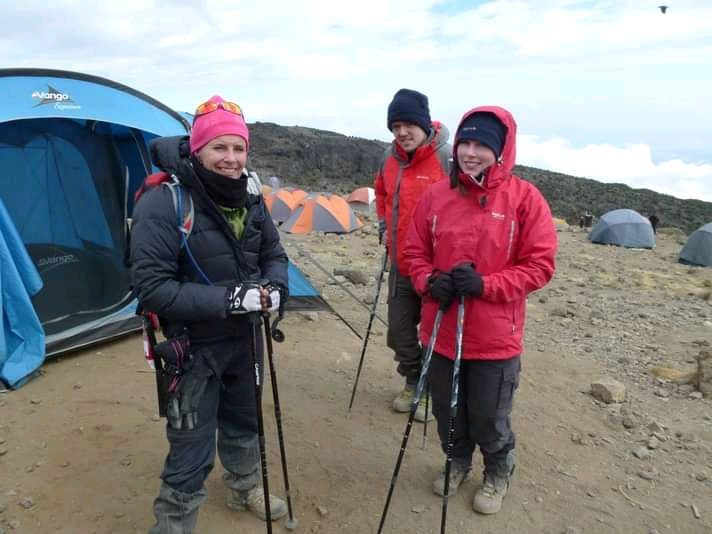
Day 4
Shira 1 Campsite to Shira 2 Campsite
After breakfast at Shira 1 Campsite, you’ll embark on a 4-5 hour trek across the Shira Plateau, moving through the moorland zone to Shira 2 Campsite (3,850m). The trail offers expansive views of Mount Kilimanjaro and the surrounding landscape. Upon arrival, porters will set up tents, and the chef will prepare lunch. After your meal, you can relax and acclimatize to the altitude while enjoying the scenic surroundings. In the evening, were guide will provide a briefing for the next day’s trek.
Altitude: 3,500 m – 3,850 m
Hiking distance: 7 km
Hiking time: 4-5 hours
- Day Activities.
- Trek 4-5 hours across the Shira Plateau to Shira 2 Campsite.
- Admire panoramic views of Mount Kilimanjaro and the surrounding landscape.
- Rest and acclimatize while exploring the scenic surroundings
- Attend an evening briefing with your guide for the next day’s trek.
- Overnight & Meal Plan
- Shira2 Camp site
- FB - Dinner, Breakfast and Lunch
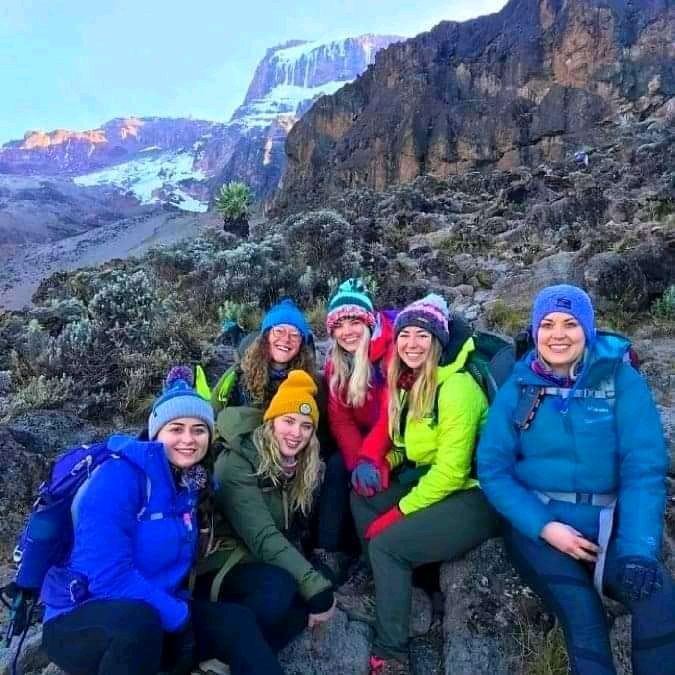
Day 5
Shira 2 Campsite to Barranco Campsite
After a delightful breakfast, embark on a scenic three-hour drive to the world-famous Ngorongoro Crater, a highlight of your Tanzania honeymoon tour, renowned for hosting Africa’s iconic Big 5. Descend into the crater for a thrilling game drive, weaving through its breathtaking landscapes teeming with diverse wildlife. Savor a romantic picnic lunch by the renowned hippo pool, enveloped by the crater’s awe-inspiring beauty, before continuing your unforgettable journey through this extraordinary natural wonder.
- Day Activities.
- Enjoy a hearty breakfast at Shira 2 Campsite.
- Trek 6-7 hours from Shira 2 Campsite to Barranco Campsite via Lava Tower.
- Ascend to Lava Tower for acclimatization and take in panoramic views.
- Descend into the scenic Barranco Valley.
- Attend an evening briefing with your guide for the next day’s trek.
- Overnight & Meal Plan
- Barranco Campsite
- Lunch
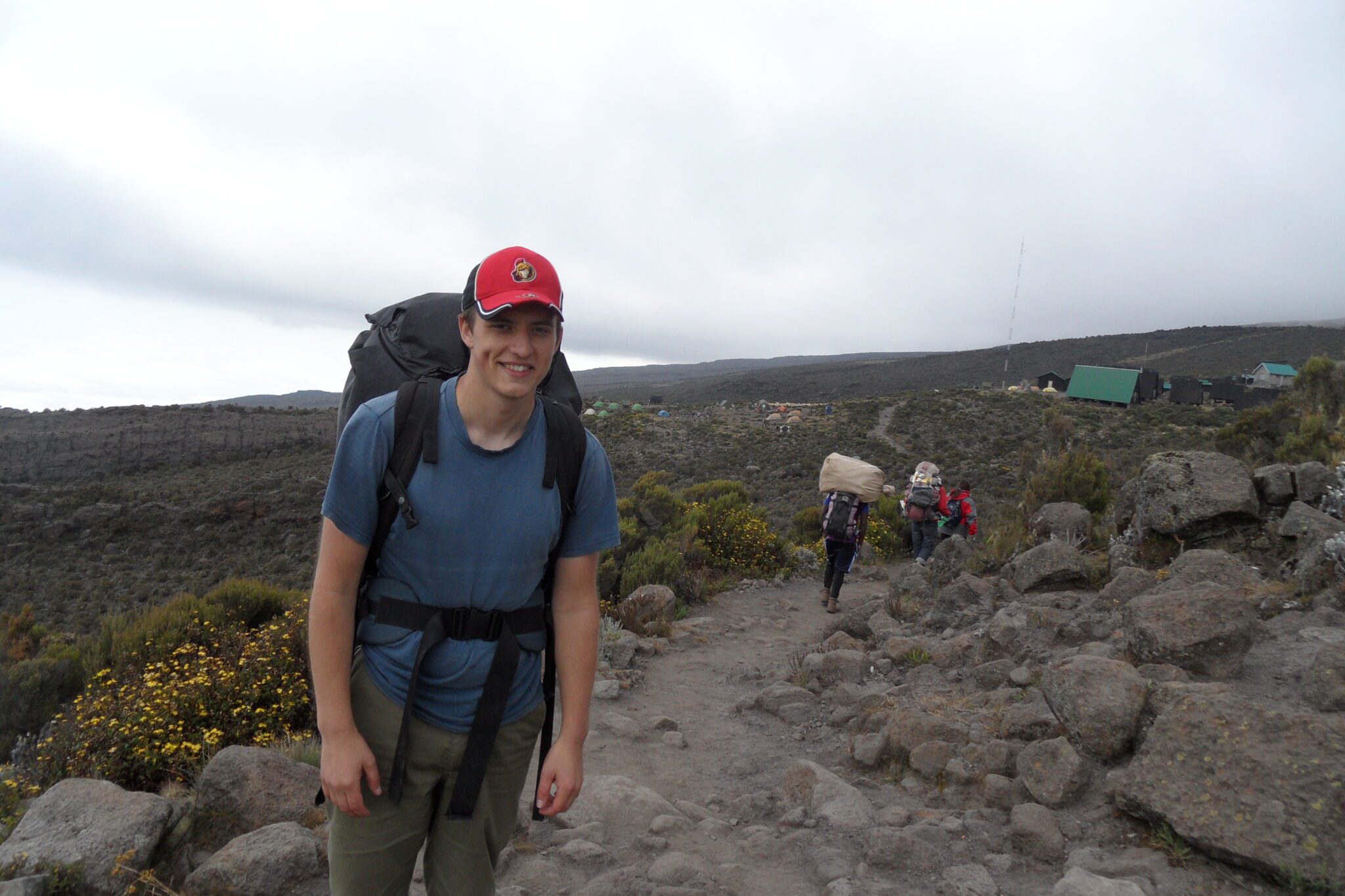
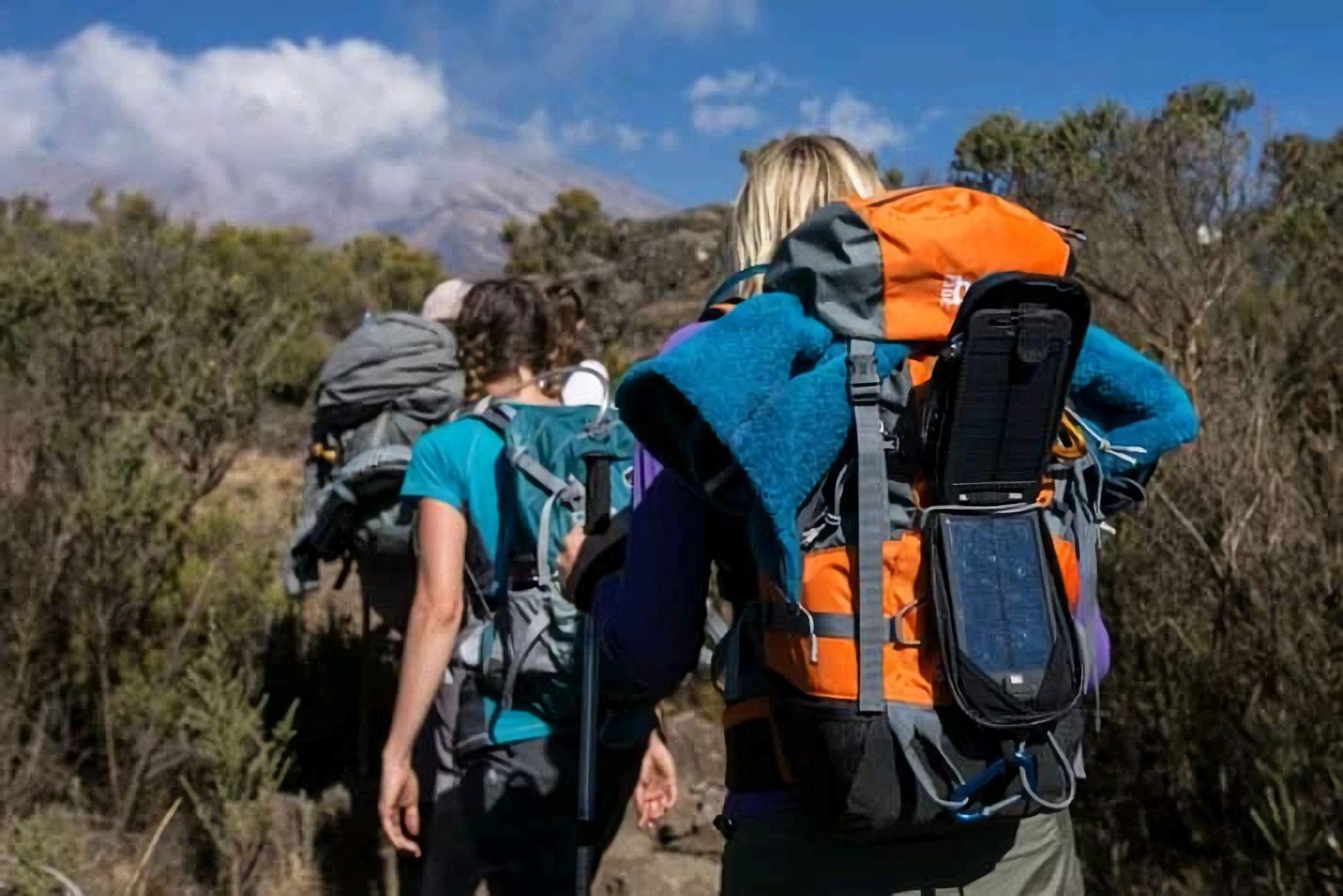
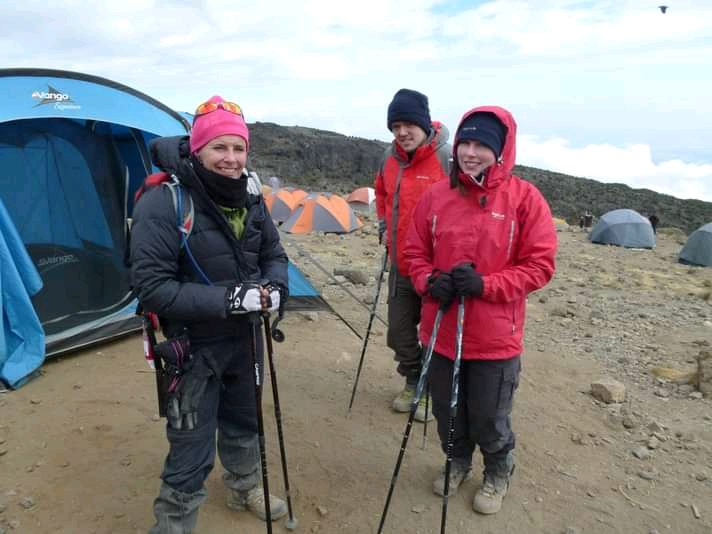
Day 6
Barranco Campsite to Barafu Campsite
After breakfast at Barranco Campsite, you’ll begin a 6-7 hour trek through the alpine desert zone to Barafu Campsite (4,670m). The trail starts with a steep climb up the Barranco Wall, offering breathtaking views, followed by a gradual ascent through rugged terrain. Upon arrival, porters will set up tents, and the chef will prepare lunch. After your meal, you’ll rest and acclimatize to prepare for the summit attempt. In the evening, your guide will provide a detailed briefing for the next day’s summit push.
Altitude: 3,900 m – 4,670 m
Hiking distance: 9 km
Hiking time: 6-7 hours
- Day Activities.
- Enjoy a hearty breakfast at Barranco Campsite.
- Trek 6-7 hours from Barranco Campsite to Barafu Campsite, starting with the Barranco Wall climb.
- Admire spectacular views during the ascent of the Barranco Wall.
- Traverse the alpine desert zone with rugged terrain.
- Attend an evening briefing with your guide for the summit push.
- Overnight & Meal Plan
- Barafu Campsite
- Dinner
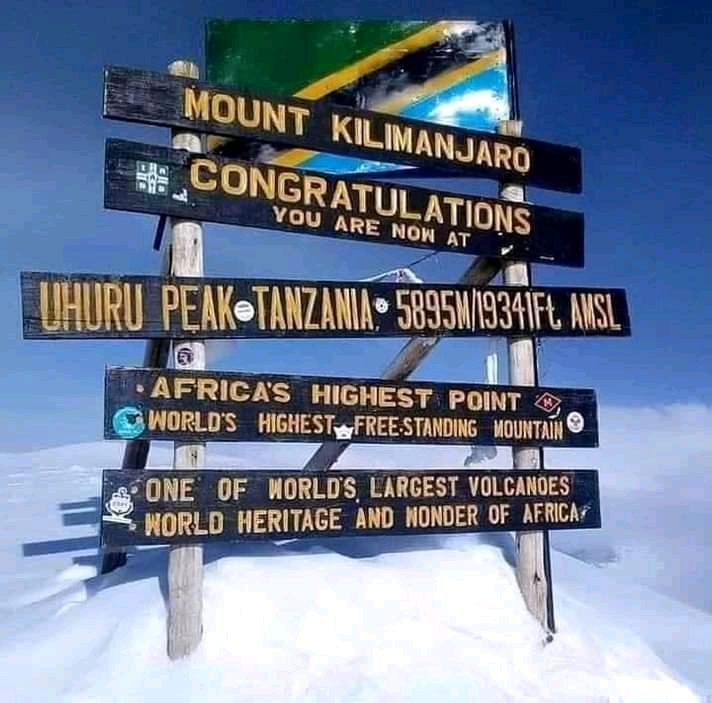
Day 7.
Barafu Campsite to Uhuru Peak and Descent to Mweka Campsite
After a midnight wake-up and light breakfast at Barafu Campsite, you’ll begin the summit attempt, trekking 6-8 hours to Uhuru Peak (5,895m), the highest point on Mount Kilimanjaro. The challenging ascent through the arctic zone offers stunning views at sunrise. After celebrating at the summit, you’ll descend 2-3 hours to Barafu Campsite for a short rest and lunch. Then, continue descending 3-4 hours to Mweka Campsite (3,100m) through the moorland zone. Upon arrival, porters will set up tents, and the chef will prepare dinner. In the evening, your guide will provide a briefing for the final day.
Altitude: 4,670 m – 5,895 m (Uhuru Peak) – 3,100 m
Hiking distance: 5 km (ascent), 12 km (descent)
Hiking time: 6-8 hours (ascent), 5-7 hours (descent)
- Day Activities.
- Wake up at midnight and enjoy a light breakfast at Barafu Campsite.
- Trek 6-8 hours through the arctic zone to reach Uhuru Peak, the summit of Kilimanjaro.
- Witness a breathtaking sunrise and celebrate at the summit (5,895m).
- Continue descending 3-4 hours to Mweka Campsite through the moorland zone.
- Arrive at Mweka Campsite and relax as porters set up tents.
- Attend an evening briefing with your guide for the summit push.
- Overnight & Meal Plan
- Barafu Campsite
- Dinner

Day 8.
Mweka Campsite to Mweka Gate and Transfer to Moshi
After breakfast at Mweka Campsite, you’ll begin a 3-4 hour descent through the lush rainforest to Mweka Gate (1,650m). The trail offers scenic views and opportunities to spot wildlife. Upon arrival at Mweka Gate, you’ll complete exit formalities and receive your summit certificate if you reached Uhuru Peak. Afterward, you’ll be transferred by vehicle (approximately 1 hour) back to your hotel in Moshi town, where you can relax and celebrate your achievement.
Altitude: 3,100 m – 1,650 m
Hiking distance: 10 km
Hiking time: 3-4 hours
- Day Activities.
- Enjoy a hearty breakfast at Mweka Campsite.
- Trek 3-4 hours through the rainforest to Mweka Gate.
- Enjoy scenic views and potential wildlife sightings along the trail.
- Complete exit formalities at Mweka Gate.
- Receive your summit certificate (if Uhuru Peak was reached).
- Transfer by vehicle (approximately 1 hour) to your hotel in Moshi town.
- Relax and celebrate your Kilimanjaro trekking achievement at the hotel.
- Overnight & Meal Plan
- Springland Hotel or Transfer to Airport
- Dinner
"Climbing Kilimanjaro via the Lemosho Route was a life-changing adventure! The guides were incredibly knowledgeable, and the porters made every campsite feel like home. The views from the Shira Plateau and the Barranco Wall were breathtaking, and reaching Uhuru Peak at sunrise was unforgettable. The team’s support made all the difference!"
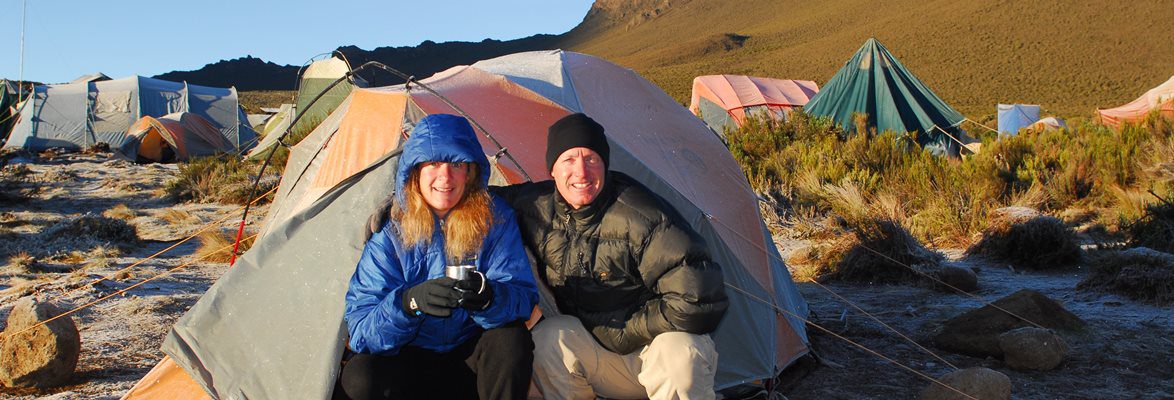
"This trek was beyond my expectations. The Lemosho Route offered stunning landscapes, from lush rainforests to the arctic summit. The daily briefings and delicious meals kept us energized and motivated. Our guide’s expertise and encouragement helped me conquer the summit. Highly recommend this journey!"
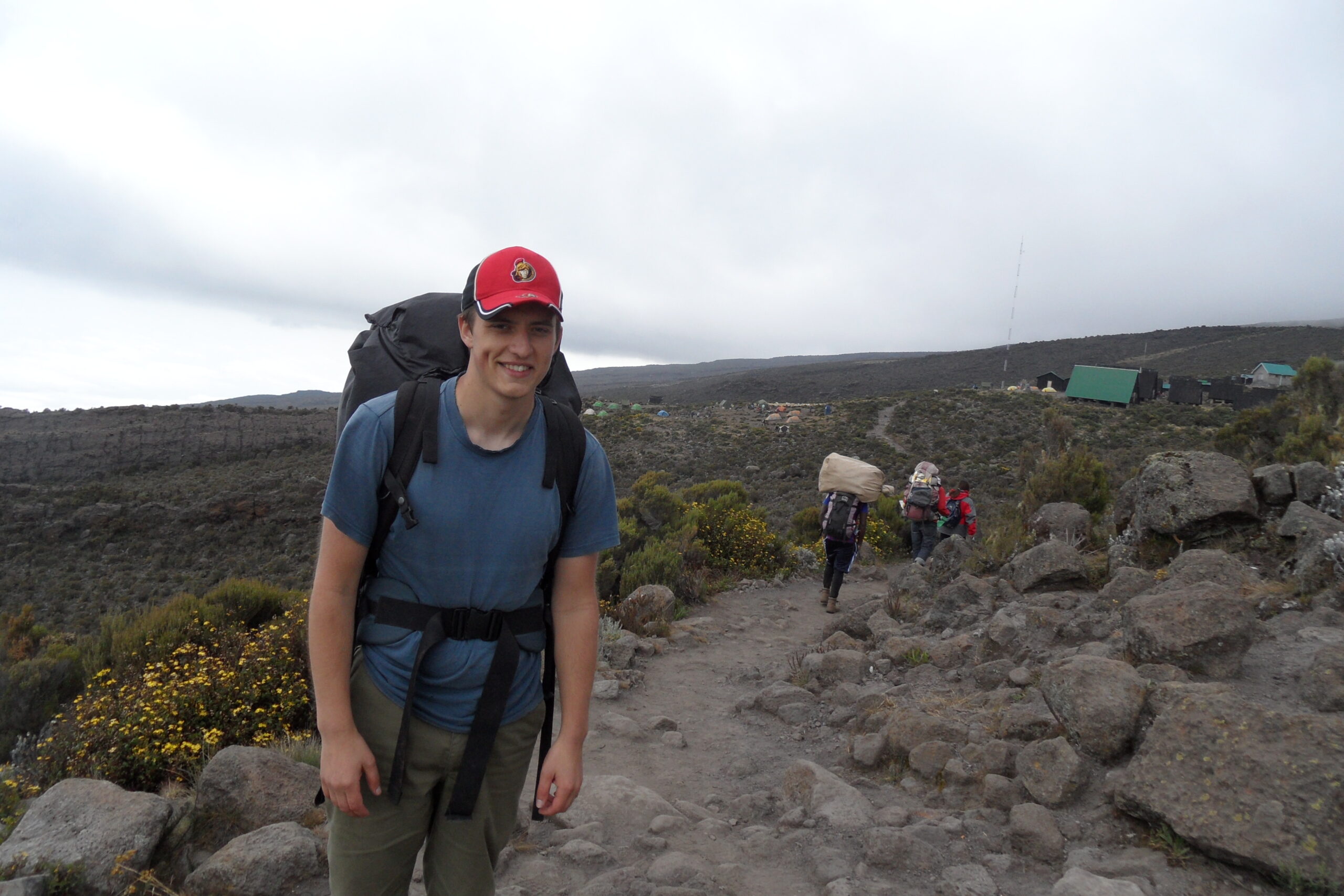
"As a first-time trekker, I was nervous, but the team made the Lemosho Route trek seamless and enjoyable. The gradual ascent helped with acclimatization, and the camaraderie among the group was heartwarming. Standing on Uhuru Peak was a moment of pride I’ll cherish forever!"

"The Lemosho Route is the way to go for Kilimanjaro! The scenery was spectacular, especially at Lava Tower and the summit. The porters and chef went above and beyond, and the organization was flawless. It’s a challenging but rewarding experience I’d do again in a heartbeat!"


